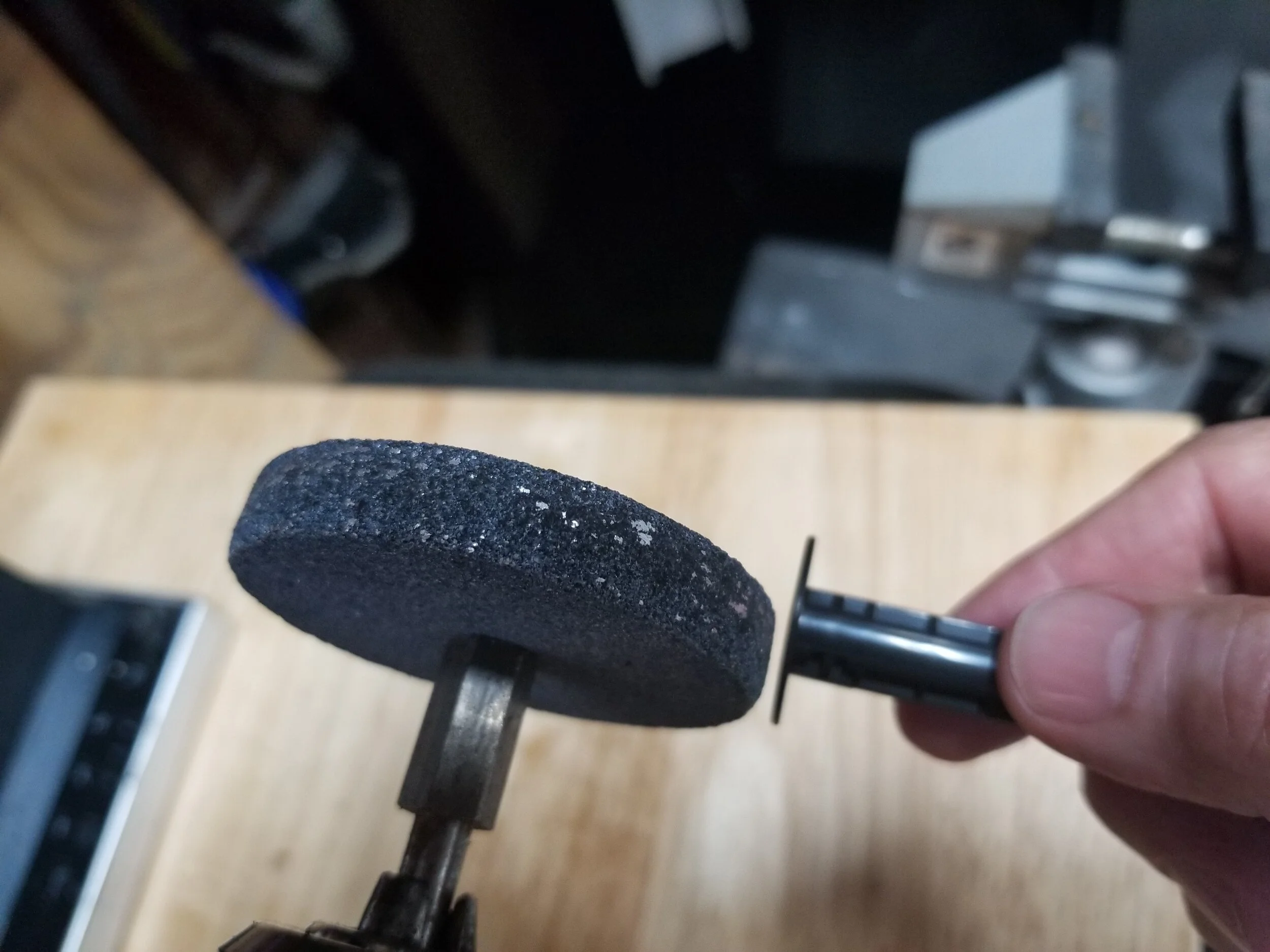It's Aliive! Shooting with a Kodak Duaflex IV and Kodet f15 Lens
Kodak Duaflex IV Camera with Kodet Lens
by Chip Weiner
It sat on my shelf for 20 years, and has been a family relic for as long as I can remember. Surrounded by a dozen other cameras, it never occurred to me to try it. After all, they don’t make 620 film anymore and the shutter never seemed to work years ago when I tried it
Then Covid hit. Jobs are drying up and I’m bored with nothing to shoot. I see that Kodak Duaflex IV in the back there and wonder…
A little wrenching on the very delicate inner workings (lubrication mostly) and I get the first click. It’s Aliiiivah! Yes!
Converting a 120 spool for 620 use
The camera shoots 6 X 6 (cm) format- 2.362 x 2.362 inches using 620 film. Several You-Tube vids instructed how to fairly easily modify a roll of 120 film (still available) with some scissors and sandpaper. 120 film and paper are the same size as 620, but one must modify the spool a little to fit the body of the camera. After putting the roll in the camera and manually cranking, I watch for the frame number to appear in the red window on the back. The print is faint and hard to see, but magically “1” appears and it is time to shoot.
The film window on the back of the Kodak Duaflex IV makes it hard to see the frame number, but ti’s there.
The camera is best held at waist level TLR style to clearly see the entire field of view through the finder. If you have not shot through an old time viewfinder, getting oriented takes some concentration. The subject is reversed, looking as though the camera should move one way to get the frame right, when really it must go the opposite. Subjects in the preview glass look bulbous and slightly distorted, sort of like looking through a fisheye lens. On this camera, there are bits of dust and crud on the mirror making the preview full of specs. Still, pretty cool.
Looking through the top of the Kodak Duaflex IV at the subject TLR style
The Kodak Kodet lens is a fixed f/15 with a 75mm equivalent lens according to Lomography.com. Online research has the shutter speed rated anywhere from 1/30 to 1/60 of a second. Taking photos doesn’t get much simpler than this. I suppose that was the intent of the design. Kodak was bringing photography to the masses in the ‘50’s, and the Duaflex was an inexpensive (~$25) way to do it. It’s a fixed lens, so no shutter speed or aperture to adjust, and nothing to focus. The other variable is ISO. I am shooting with 400 TMAX. The combination of that ISO with the fixed 1/30th sec. lens gives me an EV of ~11, which is easy to work with. With a 1/30th(ish) shutter speed and f15 aperture, I figure subjects pretty much need to be directly sun lit (I was wrong). The Duaflex came with a flash attachment and I’m sure I could find some bulbs to match, but I just want to bring this camera to life again without a lot of hassle and expense. The Model IV has an adjustment on the side that moves from “Inst”- the 1/30th of a second - to “Long” which allows a Bulb feature (shutter stays open for as long as you press the button. Tripod recommended).
The first time I hit the shutter I can’t tell if it had fired. It’s a quiet little click. I am used to the big bang from a medium format or at least the clacking of the mirror in an SLR. The Duaflex has neither. Fortunately, the Model IV has a mechanism to prevent double exposure, thus I can tell the shutter has been activated because it won’t let me fire again until I advance the film. Older Duaflex models don’t have that prevention.I am shooting in the historic district of town and many people take notice of this old gem and comment on memories they had of similar rigs.
I shoot through my roll of 10 frames and hurry home to develop it. What unfolds is fantastic, though very overexposed. I’m sure it was due to a slower than average shutter looking at the motion blur in the images. If I use it again I will shoot with a lower ISO to be sure.
The Jackson Rooming House Tampa
Vintage subjects like this old truck make for a great target with this camera.
This gent was enjoying an Ybor Cigar while trying to stay still for the slow shutter
Palm Ave Baptist Church
HB Plant Hight School Field - Dad's Stadium
Centro Asturiano
Nonetheless, I LOVE the look of the images. The cryptic artsy look from the motion blur and that old dirty lens is a thrill. Most cameras take clean clear pics. This one is gritty, dingy, and awesome. In addition, I got to bring that piece of personal history back to life in a camera used by my family 60 years ago. So cool!
Got an old camera? Dust it off and load it up! You can still buy film online and send it to get it developed. Sure, it’s not as instantly gratifying as shooting 100 photos with your phone, but it will cause you to pause, think about what you are doing, and thrill when you get to see those images emerge.









